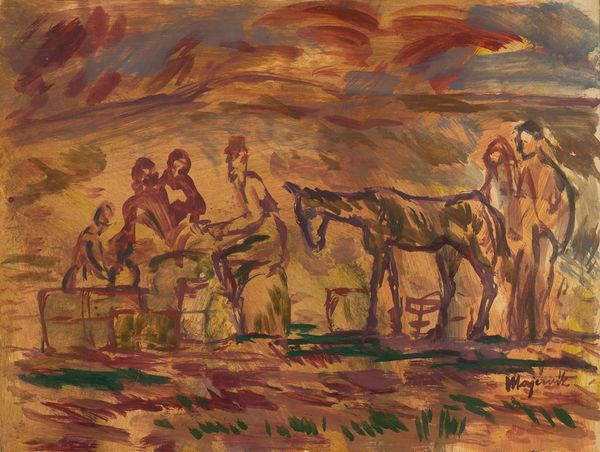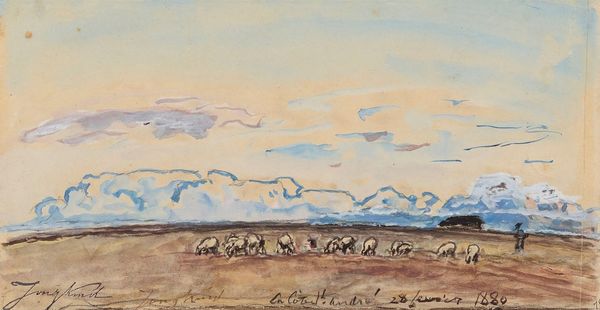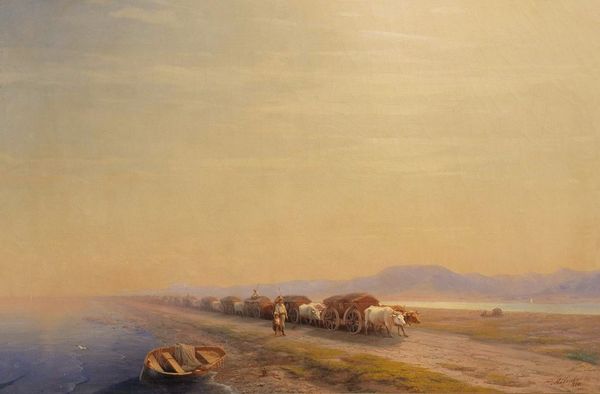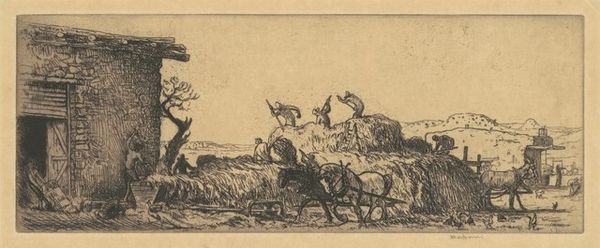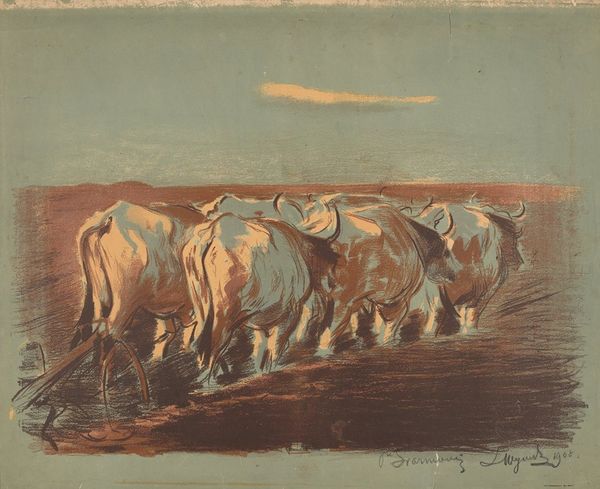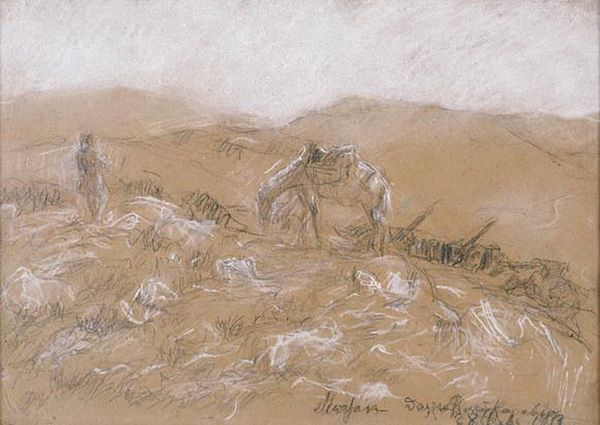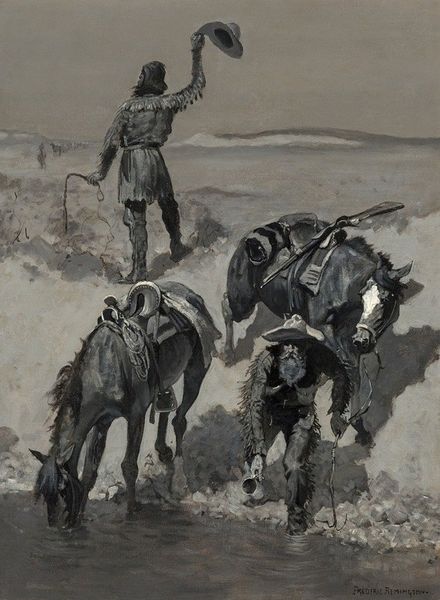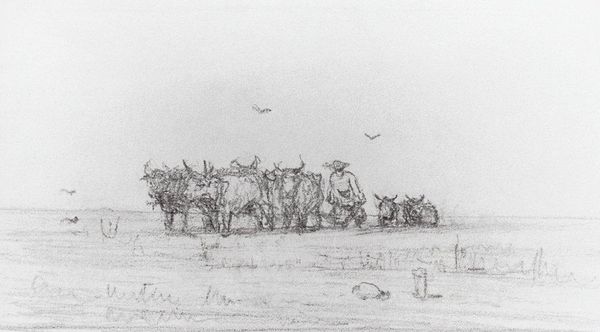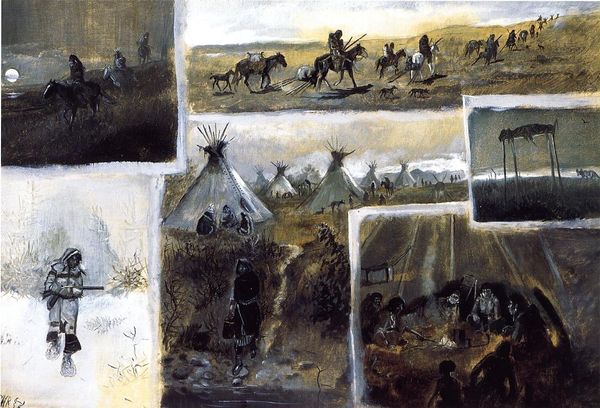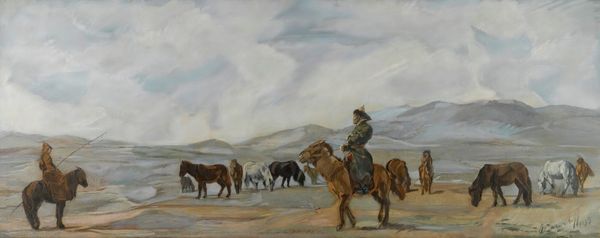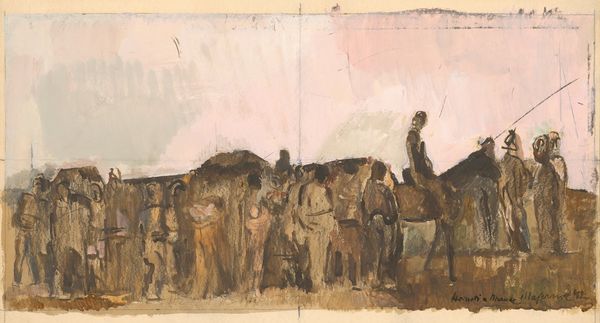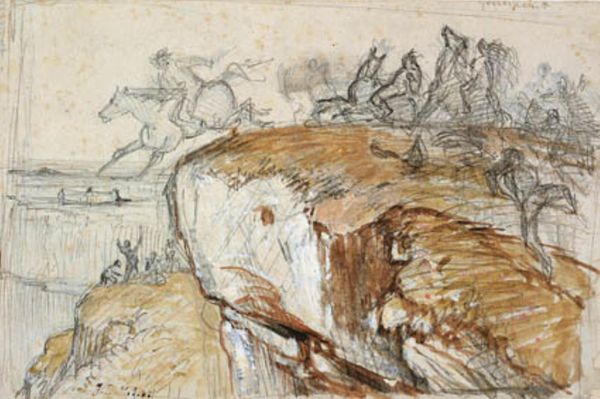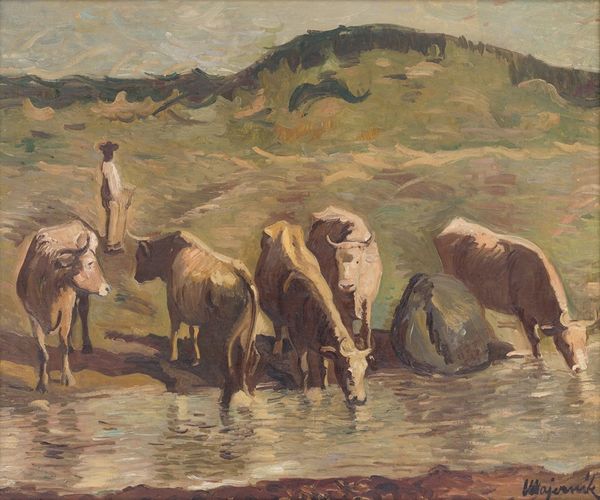
drawing, watercolor, pencil
#
drawing
#
landscape
#
charcoal drawing
#
oil painting
#
watercolor
#
pencil
#
watercolour illustration
#
charcoal
#
regionalism
#
watercolor
#
realism
Copyright: Public domain US
Editor: So, here we have Charles Burchfield's "August Pasture" from 1921. It looks like it’s done with watercolor, charcoal, and pencil. There’s a kind of stillness, but also something unsettling in the image; maybe it’s the large tree stump. What do you see in this piece? Curator: Well, it’s interesting you pick up on the tree stump, because to me that highlights the relationship between labor and nature, as manifested through these mediums. Burchfield wasn't just painting a pretty landscape, he was showing a transformation – from vibrant forest, suggested by the grazing cows, to a cleared field and now, this decaying, yet persisting, tree stump. How does the contrast between the living cows and the dead tree affect your interpretation? Editor: I see what you mean. The contrast is stark. The stump does symbolize labor's impact, and you wonder about how it disrupts the natural cycle of life...almost an ecological imbalance. Do the materials themselves suggest anything to you about that connection? Curator: Precisely! The layering of watercolor, charcoal and pencil hints at that struggle. The watercolor brings an initial softness, suggesting the pastoral ideal. The charcoal then carves in harsh lines – a deliberate act of mark-making, suggestive of human intervention, a raw and consumed natural world. Think about where Burchfield was, Ohio at this point. Did industrial or agricultural activity alter your view? Editor: Definitely, picturing where this scene comes from shifts my perspective from rural calmness to recognizing agricultural practice within a society transforming into urban living and related market pressures. Curator: And that understanding changes our experience and interpretation of this and other works. Editor: I hadn't considered all the layers of meaning embedded in the materiality itself. Curator: Materiality offers us more ways into a work; paying attention to an artist's production, context and approach makes the visible invisible.
Comments
No comments
Be the first to comment and join the conversation on the ultimate creative platform.
